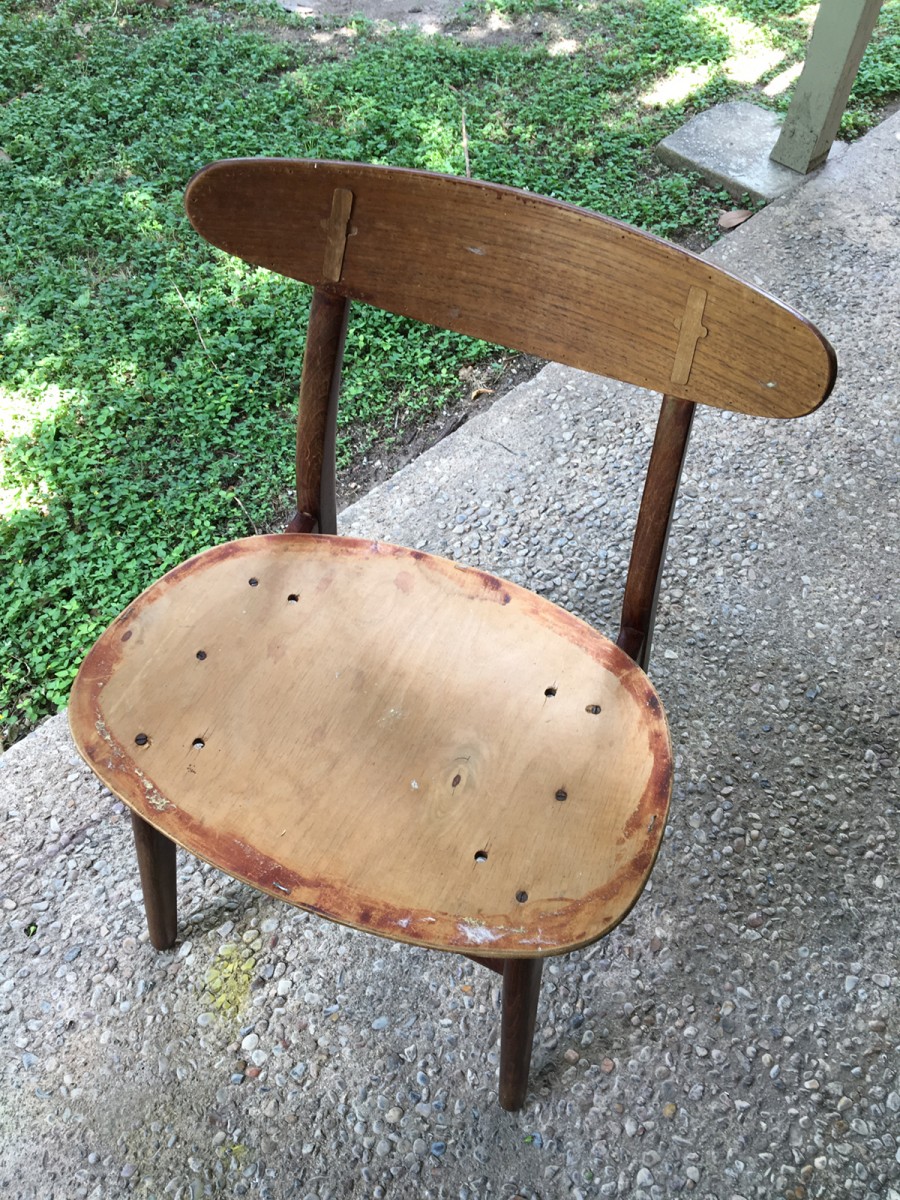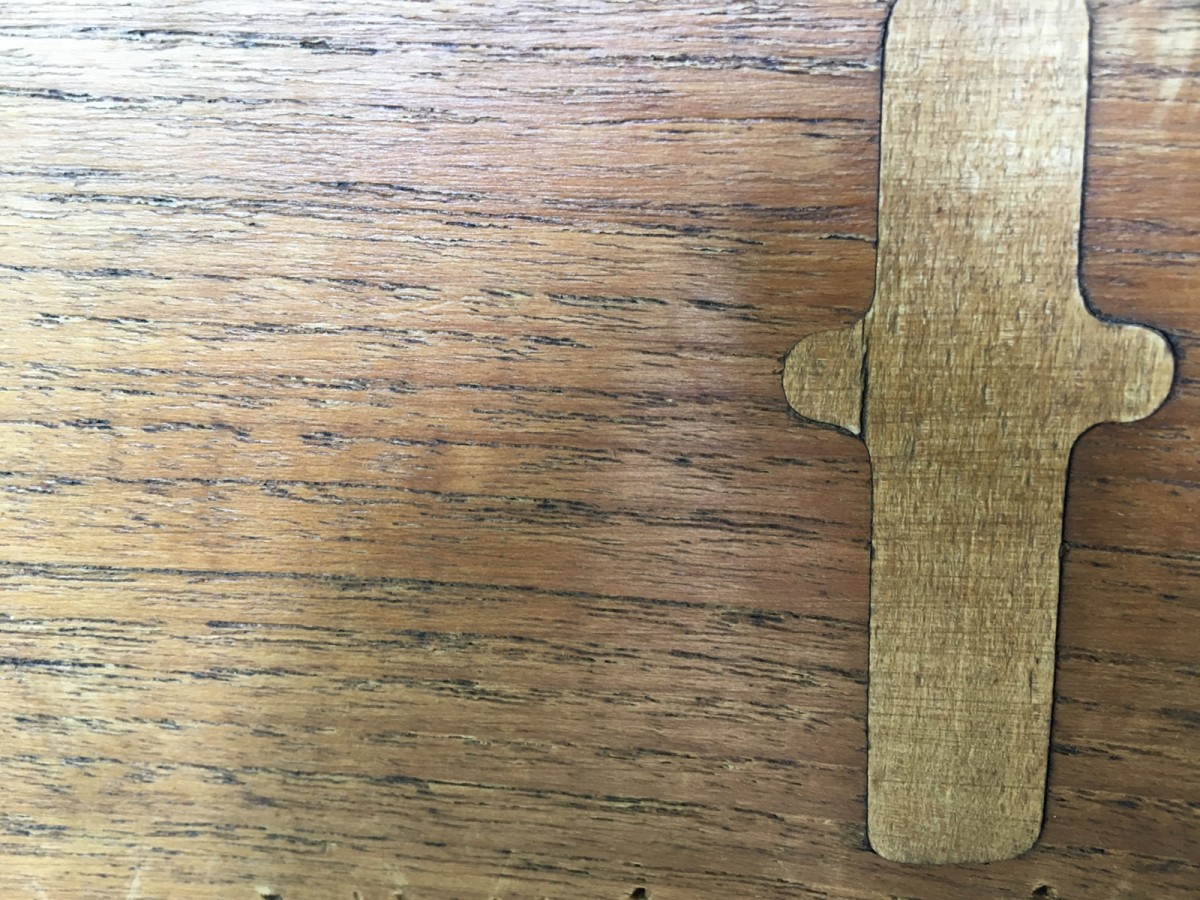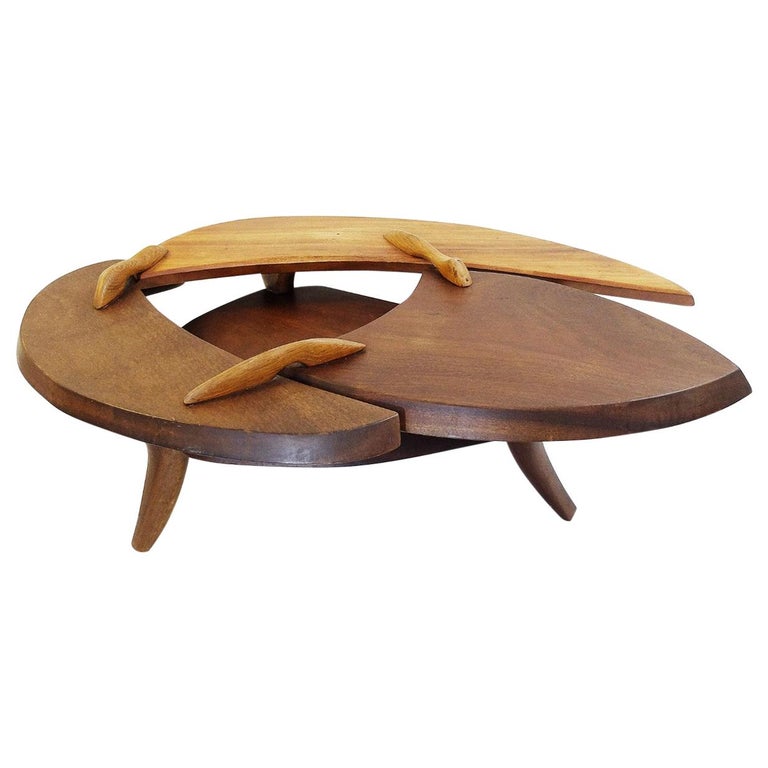I am looking for some advice for a recent find - a Hans Wegner for Carl Hansen CH-30 chair (it has the Carl Hansen / Hans Wegner burn mark on the seat bottom) I found it for $15 on Craigslist, and it has some issues, but nothing insurmountable, I would hope, and well worth restoring.
For starters, can anyone help identify the wood type(s) of this chair. I know that a lot of these come in teak, or a combination of teak (back rest) and oak (frame), but I am somewhat uncertain of this one. It appears the back rest is teak (?), and the cruciform inserts are oak veneer, but I am unsure of the frame - oak? teak? To complicate things, it seems that the frame and the back of the back rest have been stained at some point, you can see a remarkable difference between the front of the back rest and the back side. There are parts of the frame where the stain has worn off (see photos). I would be surprised if this rosewood-y stain was original...
I was planning to first give it a good clean with Murphy's oil soap and possibly steel wool, and see how the stain reacts, before moving on to stripping or - as a last resort, sanding. I would be thankful for any thoughts you might have on the best process here.
There are more issues - such as the replacement of the backrest inserts (one is peeling off, the other is cracked), and one of the leg joints which has a slight gap, but is completely sturdy (I will post pictures later, I thought I would stick to the basics of the wood type for now...)
Thanks!
 <img class="wpforoimg" src=" http://d1t1u890k7d3ys.cloudfront.net/cdn/farfuture/CW1dXp7pTMhjXRcEZNz6_jC
<img class="wpforoimg" src=" http://d1t1u890k7d3ys.cloudfront.net/cdn/farfuture/CW1dXp7pTMhjXRcEZNz6_jC
Looks to me like somebody put something thick on there, like poly perhaps. I would skip the Murphy's and go straight to chemical strip, but that's me. The inlays and frame are Oak, the backrest is Teak. I would carefully remove the inlays and take the backrest off, if I were doing it... take it all apart, strip, and then put it all back together. You may be able to preserve the inlays, but hard to tell from the pictures.
Thanks for your comments and suggestions!
So the frame is oak, that's good to know.
Is there a favorite stripper you recommend (I have used Citristrip in the past, but I guess with a varnish might as well go full on methylene chloride)
I am uploading some more images here. The first shows the worse of the two back rest inlays - unfortunately it is likely beyond salvageable... If I get them out as complete as possible, maybe they can help to trace the outlines of replacement pieces. It also shows the tack and staple holes in the back rest - possibly some attempt at a back rest upholstery? That would explain why that side isn't varnished.
The second shows the back leg joint. Possibly a previous repair. It's completely sturdy and doesn't move at all; the gap is about 2-3 mm. My brain tells me I should probably take proper care of that, too, although my gut is reluctant to add yet another item to the list...especially one that affects the very 'bones' of the chair.
Finally the Carl Hansen mark - not really of importance, except for my own motivation...
I usually get one of the more expensive brands of meth stripper. I've tried cheaping out a few times and mostly i have regretted it because the cheap stuff was thinner, evaporated faster, and/or just didn't take off as much stuff as quickly as did the $$$ brand.
I used to get Zip-Strip paste remover but i don't know if that's around anymore. Red Devil was the cheap brand then. I just got a gallon of Klean-Strip but haven't used it yet.
I don't care much for Citrus-strip. It seemed to work fine on some finishes but not on others. I don't remember the details at this point, only that I didn't think it was worth it.
you might be interested in this thread:
https://www.designaddict.com/forum/Repair/Hans-Wegner-CH30-Restoration-Th...
some items to note:
1) the leg/rail joints are interlocking mortise and tenon. You'll need to remove the seat and backrest to dismantle any frame members for re-gluing.
2) minimal chance that you'll be able to remove any plugs and be able to reinstall in a manner that looks nice. CHS actually puts a thicker piece of wood in and routers it down to be flush with the adjacent wood surface. Here is a video of how it's done on the CH28: https://www.youtube.com/watch?v=JrgW-AvpnzQ
3) it's a nice chair and worth the effort to restore, but it won't be a simple task.
Yep, I wanted to post beech, but unsurprisingly Leif was one step ahead.
Reminds me of all those 'rosewood' stained beech legs you see in lower-end Danish design with that dark red finish smothered all over it.
If I had them and the time, inclination or ability I would soap the beech parts! Accentuate the lightness of the beech. It looks to me as if the backrest is oak, but can't tell if the insets are something else or beech, and I can't tell what that something else is. Either way, I would not soap the backrest too, that just needs a nice oil.
That's just me being adventurous though, I don't suppose soap is faithful to the original finish. Just far more flattering on this timber than whatever abomination that finish is.
The rear leg joints were not loose, so I do not attempt to take those apart. And after realizing that I would have had to sacrifice all of the original oak plugs for the seat to remove the screws, I did not take apart any other front leg joints either.
That would be one of the reasons why I requested plenty of photos to be posted when you take apart yours 🙂
If you need any help, please contact us at – info@designaddict.com









